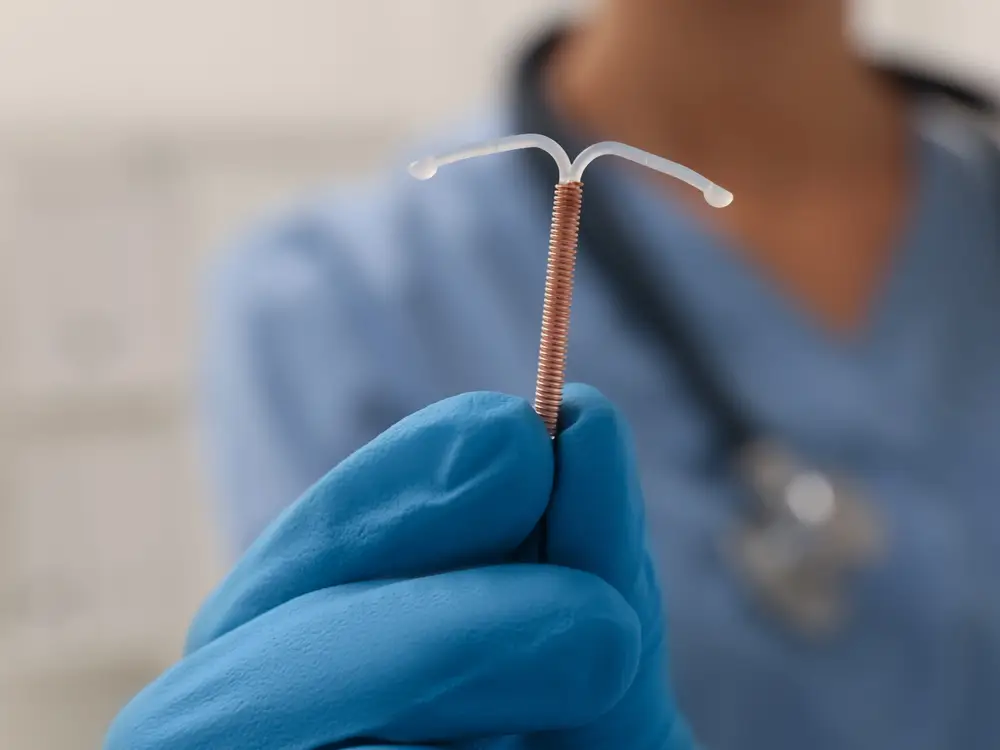Copper Coil (IUD)
The Copper contraceptive coil, a tiny superhero in the world of birth control, offers a natural way to prevent pregnancy without hormones. It's like a loyal guardian, working around the clock to create an environment that's a no-go zone for sperm. With its hormone-free power, it's perfect for those who prefer a non-hormonal approach to contraception. Enjoy the freedom to plan your life on your terms, all without any daily hassle or hormone-related changes.
Frequency
Replacement every 5 years
Effectiveness
Over 99% Effectiveness
Blood Clot Risk
No Risks of Blood Clots
Effect on fertility
No Effect on Fertility

Book Your Copper Coil (IUD) Appointment Today
At The Coil Clinic, booking an appointment means receiving the highest quality treatment from doctors who specialize in fitting the Copper IUD contraceptive.
Private Copper Coil Fitting
For every woman considering having a Copper (IUD) fitted for contraceptive purposes.
£595Whats Included
- A consultation with Dr Smith
- Full history taking and pelvic examination
- Blood pressure assessment
- Contraception review
- Removal of existing coil (if reqiured)
- Fitting of the Copper IUD
- Guidance on what to do after the fitting
Private Copper IUD Removal
Every woman with a Copper coil needs it to be removed or replaced every 5 years.
£345Whats Included
- A consultation with Dr Smith
- Full history taken
- Removal of your Copper Coil
- Contraception review
What past patients say...
Dr Smith has been fitting contraceptive devices for over 15 years, and has received many compliments, below are just a few.
Dr Smith is like a breath of fresh air. After visiting my GP surgery for a year about my perimenopausal symptoms and be told you are to young, does not show in your blood etc, Dr Smith listened and was understanding and after requesting my medical records has prescribed HRT. I would recommend Dr Smith at The Coil Clinic for menopause symptoms.
Made a pretty awkward and unpleasant experience bearable.
I felt welcomed, at ease, and able to fully discuss my concerns and health.
Frequently asked questions
Below are some frequently asked questions about the Copper Coil (IUD)
Are there any potential side effects associated with the copper contraceptive coil?
Potential side effects of the copper contraceptive coil include heavier periods, increased cramping, changes in menstrual patterns, rare expulsion or displacement, risk of uterine perforation during insertion, and a slight chance of developing pelvic inflammatory disease (PID).
How soon after removal of the copper contraceptive coil can I try to conceive?
After the removal of the copper contraceptive coil, you can try to conceive immediately, as fertility typically returns to normal without delay.
What is the insertion process like for the copper contraceptive coil?
During the insertion of the copper contraceptive coil, your healthcare provider will first perform a pelvic exam to determine the position and size of your uterus. They will then use a special inserter to place the device through the cervix and into the uterus. The process may cause some discomfort or cramping, similar to menstrual cramps. In some cases, your healthcare provider may recommend taking pain medication beforehand to minimize any discomfort. The entire procedure usually takes only a few minutes.
What are the benefits of non-hormonal IUDs?
Benefits of non-hormonal IUDs include hormone-free contraception, long-term efficacy, quick return to fertility upon removal, minimal side effects, potential for lighter periods, compatibility with breastfeeding, low maintenance, and emergency contraception use.
How does the copper contraceptive coil prevent pregnancy?
Non-hormonal IUDs use copper to prevent pregnancy. Sperm doesn’t like copper — it changes the way sperm cells move so they can’t swim to an egg. If sperm can’t make it to an egg, pregnancy can’t happen.
Can the IUD come out or get stuck?
The IUD must be fitted by a specially trained clinician who carefully puts it in the correct position. There is a small risk (about 1 in 1000) at the time of insertion that it can go into or through the muscle of the uterus (perforation) and end up in your pelvis. There is also the possibility (1 in 20) that it will be pushed out of your uterus and come out of your vagina (expulsion) . We advise that women check that they can feel the threads of their IUD 6 weeks after it has been inserted and to seek medical advice if you experience unusual pain, bleeding or discomfort, particularly in the first month after insertion.